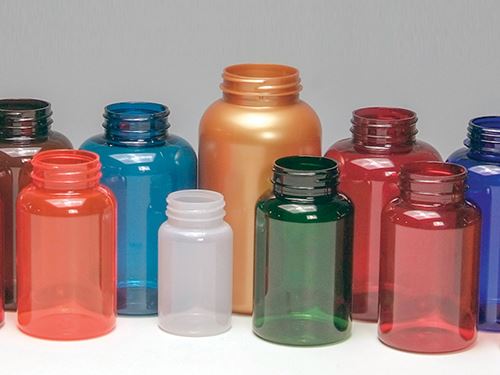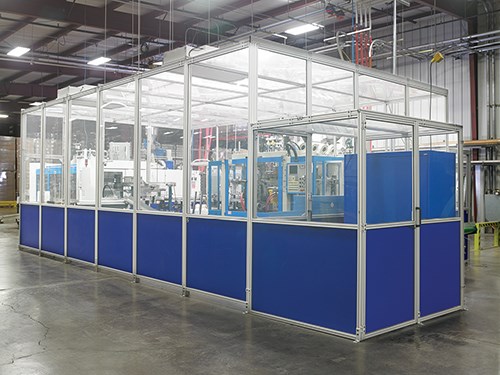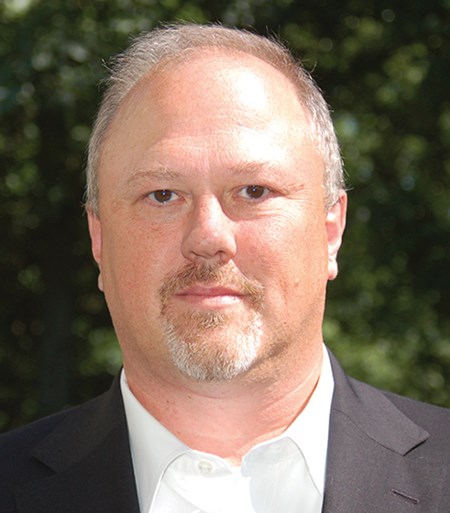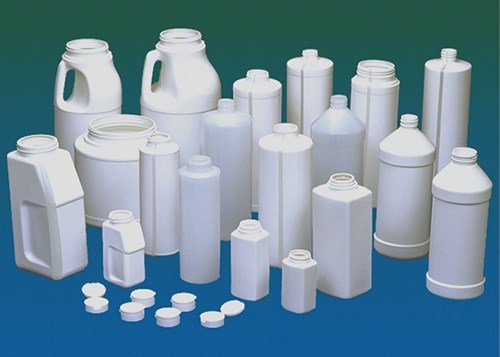Blow Molder’s Goal: Go Local on a National Scale
It's a rare feat: Combining three formerly separate blow molders under one umbrella while retaining their individual identities and "small company feel" for customers.
The name only tells part of the story. Convergence Packaging is a brand-new venture that brings together—as the name suggests—three formerly separate, privately owned blow molding companies. But unlike many such corporate groupings, the intent is not to consolidate but to retain the separate identities and customer loyalties of the individual components. Nor is the intent to narrow the focus of the acquired organizations, but rather to retain and even expand their current emphasis on niche and custom businesses.
Convergence Packaging was announced in Mrch by Graham Partners, a private investment firm in Newtown Square, Pa. It resulted from the acquisition that month of Precision Medical Inc. (PMI), a blow molder of custom and stock bottles in Hoschton, Ga. It joined two other recent blow molding acquisitions, Scandia Plastics (Sept. 2012) and Paradigm Packaging (Dec. 2013) under a new umbrella organization.
Headquarters of Convergence is in St. Louis, where president and CEO Ross Bushnell is based. A self-described “South Dakota farm boy” with an MBA degree, Bushnell got his start in consulting and then spent 10 years with Monsanto in St. Louis running its Australia/New Zealand business and then becoming director of marketing for its $2 billion U.S. business and a corporate communications officer. That was followed by eight years with Silgan Plastics, a large maker of bottles, jars, and tubes in the St. Louis area. Bushnell was v.p. and general manager of Silgan’s Closure Systems business, with responsibility for three plants, and then senior v.p. of sales/marketing for all its commercial products.
He joined Graham Partners with the ambition to “build a business from scratch.” He came aboard shortly after the Scandia Plastics acquisition, and helped Graham put together three relatively small companies into a group with around $100 million total revenues, according to the latest industry estimates (Graham does not reveal financial details). The group’s production capacity is roughly half extrusion blow, and the remainder about evenly divided between injection-blow and injection stretch-blow machinery. There’s also a small injection molding capacity for closures.
Graham’s stated ambition for the new unit is “to build a mid-sized blow molded packaging platform through the acquisition of niche-oriented, specialty blow molders.” Graham is actively looking for further acquisitions and to grow the existing properties “organically.” All three of the current businesses have room to expand, Bushnell says.
COMBINED BUT SEPARATE
Bushnell is enthusiastic about each of the individual parts of Convergence Packaging, as well as their combined potential:
Scandia Plastics, founded in 1979, has one plant in Sheboygan, Wis. It extrusion blow molds polyolefin custom and stock bottles and wide-mouth containers from medical bottles to jerrycans and even light industrial parts for lawn/garden equipment, recreational/sport vehicles, and small engines. Bushnell is most impressed by the “outstanding customer satisfaction about Scandia’s quality and care. They really know how to manage relations with their customer base. They know their customers’ needs even before the customers do.”
Paradigm Packaging, the second and largest acquisition in the group, does both extrusion and injection-blow molding of mainly stock bottles for vitamins, nutritional supplements, and over-the-counter drugs. It processes PET, polyolefins, and PS. It also injection molds some of its own closures. It has three plants in New Jersey and California. “They are a long-standing, regional niche player in nutraceuticals, a growing market with good potential. What they needed—and Convergence can provide—is a capital injection to modernize their equipment, retire some old Rainville machines, and install some larger presses with higher cavitation.”
PMI, the newest and smallest addition, has one plant in Hoschton, Ga., near Atlanta, where it does extrusion blow and injection stretch-blow molding of custom and stock PET and PE food packaging, window-stripe containers, and technical shapes. Like Scandia, it excels in quality and customer service and is “a very well-run shop,” Bushnell says.
He attributes these companies’ successes not to any special technical wizardry but to such basics as attention to customers’ concerns for quality and service and for their knowledge of specific regional and niche markets. Bushnell likes the mix of custom and stock businesses. “Paradigm is very stock oriented, but the other two are very much custom. They support startup products and small volumes. We see the ability to successfully manage custom business as what separates good from great.”
As for their markets, “We love the healthcare and food packaging businesses. PMI has been growing recently in liquid foods.” He also likes specialties: “We like anything out of the norm.” Scandia just installed its first Class 100,000 clean room. It’s also the first clean room in the Convergence Group, but Bushnell hopes for opportunities to build more of them in the future.
He also says the group’s geographical dispersion—Northeast, Southeast, Midwest, and West Coast—is integral to his and Graham’s somewhat paradoxical ambition for Convergence Packaging: “We aim to be a regional or niche player on a national scale. Our operations can help one another by sharing customers in order to service them anywhere. If, for example, one of PMI’s customers wanted to set up an operation in the West, that branch could be serviced by Paradigm’s West Coast plants. That way, we could keep a customer that we might otherwise have lost. Our primary competition is the other regional players, rather than going head to head with the biggest guys. The giant firms don’t often want to move production to follow customers, and the regional players can’t.”
Bushnell explains, “Graham Partners has a strong appreciation for, and historic ties to, plastic packaging in North America.” (It was originally the corporate finance arm of The Graham Group, which at one point included both blow molding machinery producer Graham Engineering and bottle maker Graham Packaging, all of which are now independently owned and operated.) “The Graham team and I saw an opportunity in the market for Convergence Packaging to serve a particular niche of clients that we feel are under-served. While huge Tier One customers tend to get plenty of attention, the Tier Twos and Threes often don’t. They are our targets and they are the customers for whom we believe we can add the most value.”
Besides the combination of national and local focus, another unusual aspect of Convergence Packaging is its philosophy of operating units that are both distinct and conjoined. Says Bushnell, “Typically, when you create a large business platform through acquisitions, it’s hard to maintain the local customer relationships. But we want to make sure that nothing customer-facing gets impacted by this new business organization. Each business will retain its identity, so Convergence will retain its small-company feel for the customer. Customers typically don’t want to change suppliers—they would rather stay put and not go through all the trouble of requalifications. So we want to keep them comfortable where they are.”
What Convergence can provide for its operating units is coordination and resources, Bushnell explains. Capital for expansions and upgrades is one example. “We can help the operations share best practices and market and customer information. We can offer a broader perspective, like how we can share efficiencies.” Convergence is already starting energy audits of the two oldest plants and aims to look at scrap reduction on a company-wide basis, too. Bushnell also has plans to bring outside resources such as consultants and trainers and experts to share knowledge from other Graham Partners properties.
The latter include a half-dozen companies with plastics operations, including an industrial blow molder, Western Industries in Watertown, Wis., and Comar LLC, based in Buena, N.J., which injection molds and injection-blow molds bottles, caps, oral dispensers, dropper assemblies, and custom packaging.
With respect to Convergence, Bushnell feels the group is not yet complete, and he is eager to expand. “The more our network grows, the more we can share.”
Related Content
In Sustainable Packaging, the Word is ‘Monomaterial’
In both flexible and rigid packaging, the trend is to replace multimaterial laminates, coextrusions and “composites” with single-material structures, usually based on PE or PP. Nonpackaging applications are following suit.
Read MoreUS Merchants Makes its Mark in Injection Molding
In less than a decade in injection molding, US Merchants has acquired hundreds of machines spread across facilities in California, Texas, Virginia and Arizona, with even more growth coming.
Read MoreFormulating LLDPE/LDPE Blends For Abuse–Resistant Blown Film
A new study shows how the type and amount of LDPE in blends with LLDPE affect the processing and strength/toughness properties of blown film. Data are shown for both LDPE-rich and LLDPE-rich blends.
Read MoreFoam-Core Multilayer Blow Molding: How It’s Done
Learn here how to take advantage of new lightweighting and recycle utilization opportunities in consumer packaging, thanks to a collaboration of leaders in microcellular foaming and multilayer head design.
Read MoreRead Next
People 4.0 – How to Get Buy-In from Your Staff for Industry 4.0 Systems
Implementing a production monitoring system as the foundation of a ‘smart factory’ is about integrating people with new technology as much as it is about integrating machines and computers. Here are tips from a company that has gone through the process.
Read MoreLead the Conversation, Change the Conversation
Coverage of single-use plastics can be both misleading and demoralizing. Here are 10 tips for changing the perception of the plastics industry at your company and in your community.
Read MoreHow Polymer Melts in Single-Screw Extruders
Understanding how polymer melts in a single-screw extruder could help you optimize your screw design to eliminate defect-causing solid polymer fragments.
Read More




































